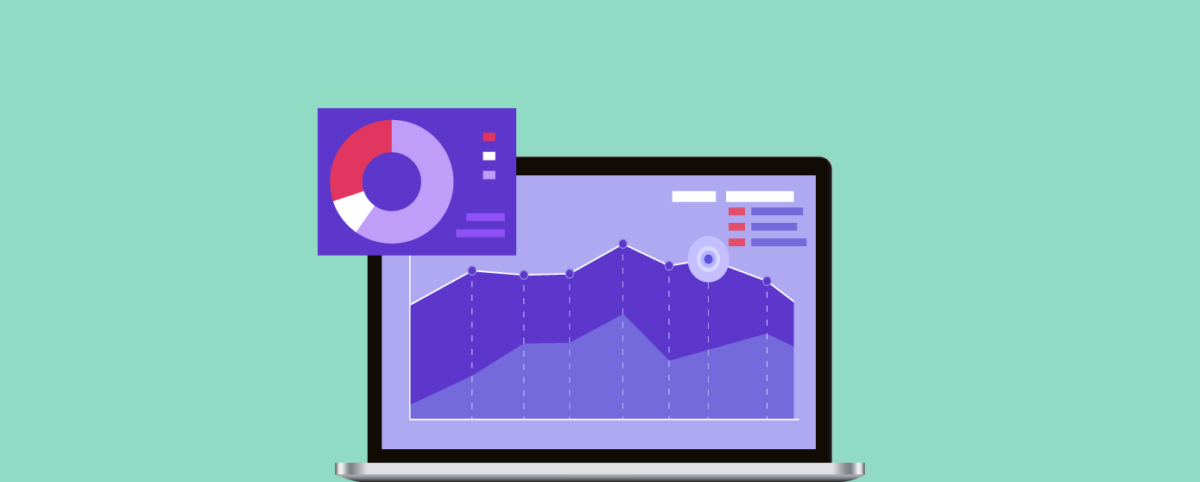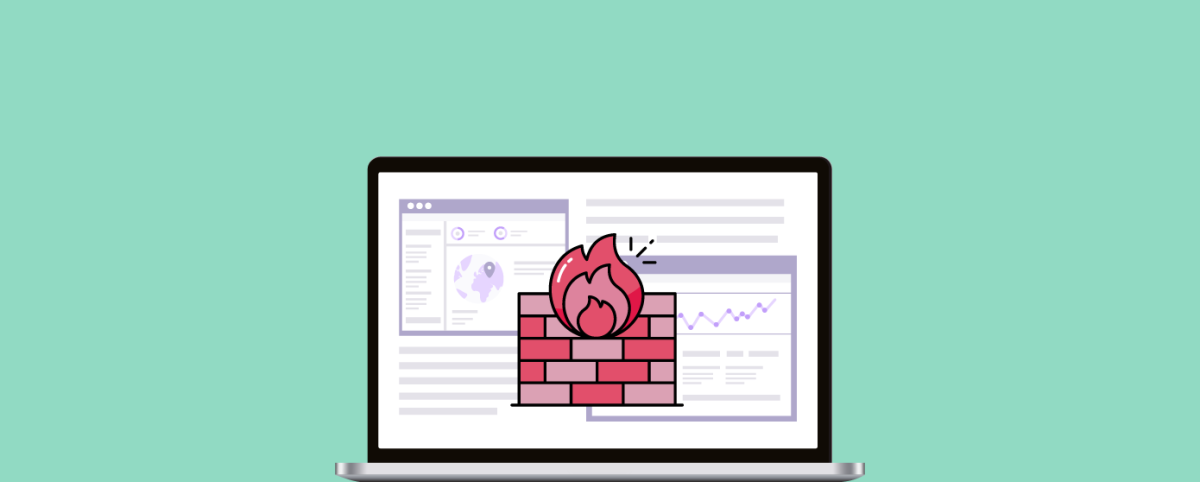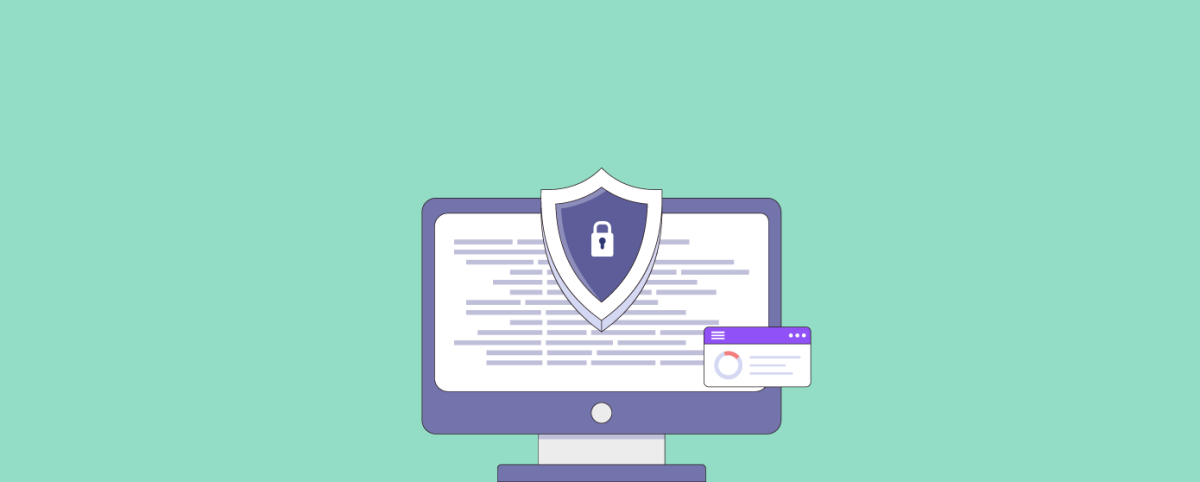9 Must-Have WAF Features to Protect SaaS Applications in 2025
The Software-as-a-Service (SaaS) industry continues its explosive growth, fundamentally transforming how businesses operate worldwide. As of 2024, more than 30,000 SaaS providers serve a global base of over 14 billion SaaS users, delivering mission-critical solutions across CRM, HR, finance, collaboration, and a wide range of specialized enterprise functions, placing SaaS at the core of digital transformation.
But this scale and ubiquity have also made SaaS providers prime targets for sophisticated cyberattacks. Their always-on availability, API-driven architecture, multi-tenant data models, and rapid release cycles expose them to complex application-layer threats. For attackers, SaaS platforms represent high-value targets not just for the sensitive data they hold, but for the critical business logic and service availability that power modern enterprises.
Additionally, SaaS platforms often dynamically generate tenant-specific subdomains and customer-facing URLs that expand the attack surface continuously.
This is where a Web Application Firewall (WAF) or Web Application and API Protection Platform(WAAP) becomes critical. Since most modern WAFs include API protection, in this blog we will use WAF and WAAP interchangeably.
WAF is often the first line of defense for SaaS applications against vulnerability attacks, API abuses, bot-driven threats, and zero-day exploits. In this blog, we will break down the essential WAF capabilities SaaS providers should prioritize to stay secure, resilient, and compliant in today’s high-risk environment.
Why SaaS Platforms are High-Value Targets
SaaS platforms sit at the center of business operations, delivering critical services, storing sensitive data, and integrating deeply with enterprise systems. Their rapid release cycles, API-first architectures, and global availability fuel growth but also create ideal conditions for attackers looking to exploit exposed surfaces.
Several factors make SaaS companies particularly attractive to attackers:
- Sensitive data repositories containing PII, financial data, intellectual property, and enterprise records.
- Deep integrations with customer IT environments and third-party ecosystems, opening lateral movement pathways.
- Multi-tenant architectures amplify risk where a single vulnerability can expose multiple customers’ data simultaneously.
- API-first models expose core business logic and data functions directly.
- Agile methodology with CI/CD pipelines and frequent release cycles heighten the risk of unpatched vulnerabilities entering production.
- Always-on global availability ensures 24×7 exposure across time zones.
- Monetization models such as freemium, subscription, and trials introduce new business logic abuse vectors.
- Critical uptime SLAs make availability attacks highly impactful.
Attackers have evolved accordingly, shifting from simple vulnerability scans to far more sophisticated SaaS-specific exploitation tactics.
Critical SaaS Security Challenges and WAF Capabilities to Address Them
1. Continuous Discovery of Subdomains & Shadow Assets
SaaS platforms scale at high velocity, with engineering teams constantly shipping new features, onboarding customers, and deploying tenant-specific environments. This rapid expansion leads to a growing web of subdomains, APIs, and customer-specific URLs that are automatically generated as part of routine operations, each one potentially introducing new exposures if not continuously discovered and protected.
For example, SaaS businesses often operate customer-specific or tenant-specific subdomains such as:
- saasapp.com
- saasapp.com/login
- xyz-enterprise.saasapp.com/api/v2/
- saasapp.com/reports/
Each new subdomain becomes an independent attack surface. If not discovered and protected immediately, these URLs can serve as easy entry points for attackers, especially if deployed without centralized security oversight.
Discovery of dynamic assets and subdomains in SaaS platforms:
- Continuous asset discovery with a centralized view of all discovered & onboarded domains, subdomains, and APIs, enabling security teams to discover, monitor, and protect every exposed asset through a single dashboard.
- Automated API discovery that identifies undocumented and shadow APIs created across distributed teams.
- One click onboarding of newly discovered assets for protection with zero delays or downtime.
2. Securing APIs Against Abuse & Exploitation
APIs power SaaS organizations by enabling deep customer integrations, but they also expose highly sensitive functionality when not properly secured. Attackers commonly exploit flaws such as broken object-level authorization (BOLA), mass enumeration, and schema manipulation to exfiltrate data or disrupt critical business workflows.
Key Stat:
According to the State of Application Security 2025 by Indusface, APIs faced 43 percent more attacks per host than websites, highlighting the growing threats targeting API security across cloud-native platforms including SaaS.
Key API protection capabilities that SaaS providers need:
- Positive security policy deployment for schema validation to enforce strict request structures and prevent malformed or unexpected input.
- Behavioral monitoring to detect mass scraping, enumeration, and abuse patterns.
- Protection against OWASP API Top 10 risks, including IDOR, BOLA, and data exposure.
- Discovery and classification of APIs that handle PII, enabling focused monitoring and data protection.
- Automatic triggers when existing APIs get updated, thereby ensuring protections stay relevant to evolving request structures.
3. Defending Against Bot-Driven Attacks (ATO, Credential Stuffing, Fake Account Creation)
SaaS platforms are frequent targets of large-scale bot attacks attempting to compromise user accounts, generate fake signups, and abuse trial-based revenue models. Credential stuffing remains a particularly severe threat, with attackers using billions of leaked credentials to automate login attempts.
Additionally, the growing use of AI-powered integrations is driving a new class of automated abuse. For example, organizations may deploy AI agents that autonomously sync with SaaS tools such as CRMs or analytics platforms to extract insights, trigger workflows, or query large datasets in real time. While legitimate in design, such agents can unintentionally flood APIs with high-frequency requests. This can lead to inflated usage, performance degradation, or even partial denial-of-service, closely mimicking malicious bot behavior.
Key Stat:
Credential abuse is now the #1 cause of web and API breaches, accounting for the largest share of incidents globally (Verizon DBIR 2025).
Key bot management capabilities that SaaS providers need in a WAF:
- Granular bot scoring to accurately classify good bots, bad bots, and human users based on multiple signals.
- User-defined bot policies to allow, challenge, or block behavior based on business needs.
- Advanced bot management leveraging device fingerprinting and behavioral detection to block automated login abuse.
- AI-powered threat detection and remediation to continuously analyze evolving attack patterns, automatically update protections, and minimize false positives without manual intervention.
- Protection for both web and APIs, against automated abuse.
- Credential stuffing protection through IP reputation, velocity analysis, and progressive challenges such as CAPTCHA and MFA triggers.
- Adaptive rate-limiting to dynamically control traffic spikes and prevent abuse without disrupting legitimate users.
- Workflow-based bot policies that detect unusual actions, like going straight to report downloads or settings pages without logging in or navigating the app normally, and block or challenge those requests.
- AI-aware access controls that detect and limit overactive tools like ChatGPT, Gemini, or other connected AI agents making too many API calls, to ensure usage stays within safe and expected workflows.
4. Preventing Vulnerability Exploitation: Access Controls, Session & Token Risks
SaaS platforms handle sensitive data and assign different access levels based on user roles. Attackers often try to bypass these access controls by tampering with requests, changing parameters, or manipulating API calls. If successful, they can access confidential data or even other customers’ information in multi-tenant environments.
Session hijacking is another risk where attackers steal active session tokens through methods like cross-site scripting (XSS) or insecure cookie handling. With valid tokens, attackers can take over user accounts and maintain unauthorized access.
Key Stats:
- According to the Verizon DBIR 2025, vulnerability exploits have now surpassed phishing to become one of the leading causes of breaches globally.
- Broken Access Control is the number one web application vulnerability, as per OWASP Top 10.
Vulnerability management and exploitation prevention capabilities SaaS providers need in a WAF:
- OWASP Top 10 protections to prevent cross-site scripting (XSS) and client-side token theft.
- Runtime payload inspection to detect abnormal or malicious request behaviors.
- Secure cookie enforcement (HTTPOnly, Secure, SameSite) to limit token exposure.
- Gray box scanning to uncover vulnerabilities that only appear after login, such as broken access controls or improper privilege handling.
- Continuous expert-led penetration testing (PTaaS) integrated with automated scanning for accurate discovery and remediation of vulnerabilities.
- Autonomous virtual patching and zero-day protection to instantly block exploitation of newly discovered web and API vulnerabilities without waiting for code fixes.
- A clean zero vulnerability report for compliance requirements such as SOC 2, PCI DSS, GDPR, etc.
5. Avoiding Business Logic Abuse & Subscription Fraud
SaaS platforms are increasingly exposed to business logic abuse, where attackers exploit unintended gaps in workflows, automating trial sign-ups, bypassing subscription limits, inflating usage quotas, or manipulating account privileges to gain unauthorized access or financial advantage. Unlike traditional attacks that exploit technical vulnerabilities, these abuses target how legitimate processes are designed, making them harder to detect and prevent with conventional security tools.
Key protections against business logic abuse in a modern WAF:
- Custom rule creation based on business logic vulnerabilities to detect & protect against abnormal usage patterns, resource abuse, and subscription manipulation.
- Real-time alerting for workflow abuse or unauthorized inputs.
6. Protecting Against Website Defacement & Malware Injections
Since SaaS platforms are entirely web-based, any compromise to the application’s content or scripts directly impacts customer trust, brand reputation, and platform reliability. Malware injection, unauthorized content changes, and defacement attacks can lead to data theft, reputational damage, and service disruption.
Such attacks may involve malicious file uploads, compromised admin accounts altering UI components, or external actors injecting rogue JavaScript that steals session data or manipulates user behavior.
Defacement and malware protection capabilities for SaaS applications:
- Blocking malicious file uploads and payloads to prevent malware infiltration.
- Automated scanning to detect unauthorized content changes or injected malware across SaaS UIs and customer dashboards.
- DOM-level defacement detection to identify script manipulations, unauthorized JavaScript, and altered media or link structures.
- Early detection to prevent browser blacklisting or security warnings that erode customer trust.
7. Mitigating DDoS & Resource Exhaustion Attacks
Availability directly drives revenue and customer experience for SaaS platforms. Attackers often target SaaS uptime by launching volumetric DDoS attacks or exhausting resources. Even short outages can severely impact customer trust and contractual SLAs.
Key Stat:
According to the latest State of Application Security Report by Indusface, 6 out of 10 websites witnessed a DDoS attack in 2024, highlighting the growing frequency of availability-based attacks against SaaS platforms.
DDoS mitigation capabilities for SaaS platforms in a WAF:
- AI-powered behavioral DDoS detection and mitigation across network and application layers.
- Globally distributed, auto-scalable infrastructure to absorb traffic spikes without affecting performance.
- Early-stage malicious traffic filtering to block floods before they reach core SaaS infrastructure.
- Transparent billing models that do not penalize customers for DDoS traffic volumes.
- I’m under attack emergency mode to activate instant platform-wide hardening.
- 24/7 fully managed DDoS response team for continuous monitoring and rapid incident handling.
8. Strengthening Client-Side Protection Against Browser-Based Attacks
B2B SaaS platforms often embed third-party JavaScript for analytics, chat, feature experiments, and tracking. These scripts run inside users’ browsers. If compromised, attackers can inject malicious code to steal session tokens or manipulate the UI, completely bypassing server-side defenses.
Key Stat:
Gartner predicts that by the end of 2025, 45 percent of organizations will have experienced a software supply chain attack. This represents a threefold increase from 2021. Many of these threats originate from compromised browser-side scripts, making client-side protection a critical need for SaaS providers
Client-side protection capabilities SaaS providers need in a WAF:
- Continuously scans third-party JavaScript for unexpected changes or potentially suspicious behavior.
- Real-time alerts on suspicious script activity and mitigation actions against web-browser based supply chain attacks.
- Protection against formjacking, keylogging, and browser-based data exfiltration attacks.
- Automatic rule updates to protect against zero-day threats in third-party libraries or tools.
- Origin enforcement to ensure that only approved and trusted sources can execute scripts in the browser.
- Script whitelisting and integrity checks to block execution of untrusted or modified third-party code.
9. Ensuring Always-On Availability
For SaaS businesses, availability directly equals revenue, SLAs, customer trust, and long-term retention. Even brief periods of downtime can impact thousands of customers simultaneously, damage contractual obligations, and erode brand credibility.
The recent CrowdStrike-triggered global outage showed how even some of the largest SaaS-reliant enterprises and their customers can be severely affected when platform-level disruptions occur. This reinforces why SaaS providers must design for failure at every layer, including security infrastructure like WAAP, ensuring business continuity even during unexpected outages or vendor failures.
High availability and failover features SaaS providers need in a WAF:
- Highly redundant, globally distributed architecture designed to eliminate single points of failure.
- Automatic failover mechanism designed to prevent downtime during security incidents.
- 100% uptime guarantee.
Why AppTrana WAAP is a Great Fit for SaaS Businesses
SaaS platforms operate at breakneck speed, and AppTrana WAAP is purpose-built to deliver security that keeps pace with that agility while reducing operational overhead. From attack surface expansion to API abuse and client-side threats, AppTrana provides unified protection tailored for the unique challenges of SaaS.
Here’s how AppTrana WAAP maps directly to the most critical SaaS security challenges:
| SaaS Security Challenges | How AppTrana WAAP Helps |
|---|---|
| 1. Continuous Discovery of Subdomains & Shadow Assets | Automated discovery and one-click onboarding of domains, subdomains, and APIs for protection. |
| 2. Securing APIs Against Abuse & Exploitation | Continuous API discovery, schema enforcement with positive security protection, PII tracking, and automatic triggers when APIs get updated to keep protections relevant. |
| 3. Defending Against Bot-Driven Attacks | Advanced bot management with behavior-based detection, adaptive controls, workflow-based bot policies, and rate limiting for AI/LLM bots. |
| 4. Preventing Vulnerability Exploitation | Continuous PTaaS, expert-led penetration testing, instant vulnerability remediation. |
| 5. Avoiding Business Logic Abuse & Subscription Fraud | Custom rules and workflow behavior analysis to detect and prevent abuse of trials, subscriptions, or quotas. |
| 6. Protecting Against Website Defacement & Malware Injections | Real-time scanning of content and scripts, DOM-level defacement detection, and malicious file upload prevention. |
| 7. Mitigating DDoS & Resource Exhaustion Attacks | AI-driven DDoS protection with URI/IP/session-level rate limiting, unmetered mitigation, and 24/7 managed response from AppTrana’s SOC. |
| 8. Client-Side Protection from Supply Chain Attacks | Continuous monitoring of third-party scripts with integrity checks, real-time anomaly alerts, and active protection against browser-based supply chain attacks. |
| 9. Ensuring Always-On Availability | Built-in failover, distributed architecture, and 100% uptime guarantee to prevent service disruption. |
By combining automation, AI, and always-on security expertise, AppTrana enables SaaS companies to scale securely, stay compliant, and deliver uninterrupted, secure services across global markets without slowing innovation.
SaaS Evolves Fast, So Do the Threats and the Security Demands
In today’s fiercely competitive SaaS market, speed of innovation, compliance readiness, and customer trust are the foundation for growth. As providers race to release new features, onboard global customers, and meet evolving regulatory demands, their attack surface expands just as rapidly. AI-powered integrations, third-party scripts, and an ever-growing API footprint add further complexity.
But earning and retaining customer trust ultimately hinges on one critical factor: maintaining a consistent track record of securing customer data, avoiding breaches, and delivering reliable services.
AppTrana WAAP empowers SaaS companies to achieve exactly that. With AI-powered protection, autonomous remediation, and fully managed security, SaaS providers can confidently scale their platforms, stay compliant, and deliver uninterrupted and secure services even as the threat landscape continues to evolve.
Stay tuned for more relevant and interesting security articles. Follow Indusface on Facebook, Twitter, and LinkedIn.

 June 20, 2025
June 20, 2025






